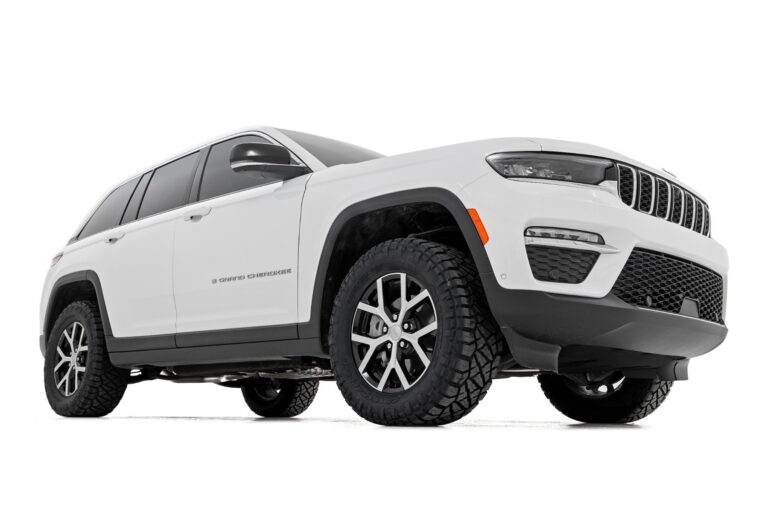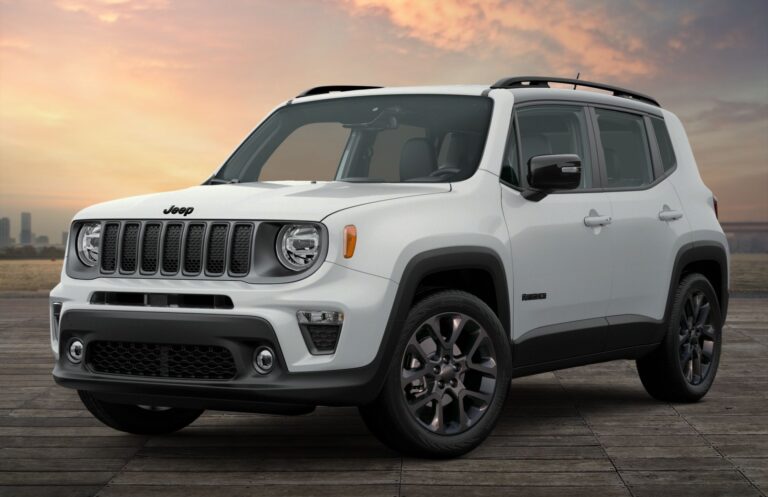First Jeep For Sale: Tracing the Origins and Legacy of an Icon
First Jeep For Sale: Tracing the Origins and Legacy of an Icon jeeps.truckstrend.com
The phrase "First Jeep For Sale" evokes a rich tapestry of history, innovation, and enduring passion. It can refer to the very genesis of the iconic vehicle – the moment the first prototypes were offered for military evaluation – or it can signify a personal milestone: the exhilaration of acquiring one’s initial Jeep, or the bittersweet decision to part with a beloved first companion. Regardless of its interpretation, "First Jeep For Sale" encapsulates a significant event in the narrative of this legendary marque, a testament to its unparalleled legacy and enduring appeal.
This comprehensive guide delves into the multifaceted meaning of "First Jeep For Sale," exploring its historical roots, its transition into civilian life, and practical advice for those looking to buy or sell their own piece of Jeep history.
First Jeep For Sale: Tracing the Origins and Legacy of an Icon
The Genesis of the First Jeep: From Concept to Combat (The Original "First Jeeps" For Sale)
The story of the "First Jeep For Sale" truly begins in the crucible of World War II. As conflict loomed, the U.S. Army recognized an urgent need for a lightweight, rugged, four-wheel-drive reconnaissance vehicle. In 1940, a mere 11 days were given to automotive manufacturers to submit a prototype. Only two companies initially responded: American Bantam Car Company and Willys-Overland. Ford Motor Company soon joined the race.
- American Bantam BRC-40: Bantam, despite its small size, was the first to deliver a working prototype. Their BRC (Bantam Reconnaissance Car) was agile and met most specifications. It was, in essence, one of the very "first Jeeps for sale" to the military for evaluation.
- Willys Quad & MA: Willys-Overland quickly followed, submitting their "Quad" prototype, which evolved into the MA (Military A) model. Willys impressed with its powerful "Go-Devil" engine, which was later recognized as a key advantage.
- Ford Pygmy & GP: Ford’s entry, the "Pygmy," also showcased innovative design.
After rigorous testing, the Army ultimately favored Willys’ design for mass production, primarily due to its superior engine and lower cost. However, due to the immense demand, Willys shared its blueprints with Ford, leading to the joint production of the definitive World War II "Jeep": the Willys MB and Ford GPW. These vehicles, produced in the hundreds of thousands, were the true "First Jeeps For Sale" on a massive scale – sold to the U.S. military and Allied forces worldwide, becoming indispensable tools of war. Their legendary reliability, versatility, and go-anywhere capability earned them the affectionate nickname "America’s Greatest Contribution to Modern Warfare."

Post-war, many of these military "First Jeeps" were declared surplus. Thousands were sold off to the public, marking the initial civilian acquisition of these battle-hardened machines, often at bargain prices. This ignited a burgeoning market for the robust and versatile vehicles.
The Civilian Birth: When the "First Jeeps" Went Public (CJ Series)
Recognizing the immense potential of their wartime creation, Willys-Overland pivoted swiftly to civilian production. The CJ-2A, introduced in 1945, was the true "First Jeep For Sale" to the general public as a purpose-built civilian vehicle. Nicknamed the "Universal Jeep," it retained the ruggedness of its military predecessor but added features for civilian use, such as a tailgate, wipers, and headlights.
The CJ series continued to evolve through the decades (CJ-3A, CJ-3B, CJ-5, CJ-7, CJ-8 Scrambler), becoming synonymous with utility, adventure, and freedom. These early civilian Jeeps were the vehicles that introduced generations to off-roading, farm work, and outdoor recreation. They cemented the Jeep’s status not just as a vehicle, but as a lifestyle icon. For many enthusiasts today, a classic CJ represents their "First Jeep" in the purest sense – a direct descendant of the original and a tangible link to its storied past.
Buying Your "First Jeep": A Guide for New Enthusiasts

For many, the dream of owning a Jeep begins with the search for their "first." This isn’t just about buying a car; it’s about joining a community and embracing a unique way of life.
Why a Jeep?
The appeal of a Jeep lies in its heritage, unparalleled off-road capability, open-air freedom, and a fiercely loyal community. Whether you seek adventure, a rugged daily driver, or a project vehicle, there’s a Jeep for you.
Types of "First Jeeps" to Consider:
- Classic CJs (CJ-2A, CJ-5, CJ-7): The direct descendants of the original, offering a raw, unfiltered Jeep experience. Ideal for enthusiasts seeking authenticity, restoration projects, or light trail use.
- Early Wranglers (YJ, TJ, LJ): The spiritual successor to the CJ, offering more comfort and modern amenities while retaining significant off-road prowess. Great entry points for those wanting a balance of classic feel and everyday usability.
- Later Wranglers (JK, JL): More refined, powerful, and technologically advanced. Excellent for those wanting modern comfort, safety features, and serious off-road capability right off the lot.
- Cherokee (XJ): A unibody SUV with legendary durability and surprising off-road chops. A more practical and affordable entry into the Jeep world for many.
- Other Models (Grand Cherokee, Renegade, Compass, Gladiator): While not traditional "Jeeps" in the classic sense, these offer diverse options for first-time buyers seeking the brand’s versatility in a more comfortable package.

Key Considerations When Buying:
- Budget: Jeeps vary widely in price based on age, condition, model, and modifications. Be realistic about what you can afford, including potential repairs or upgrades.
- Intended Use:
- Daily Driver: Consider reliability, fuel economy, and comfort. Newer models or well-maintained XJs might be better.
- Off-Roader: Focus on drivetrain, suspension, and potential for modification. Wranglers and older CJs excel here.
- Project Vehicle/Restoration: Be prepared for significant time, money, and mechanical knowledge.
- Condition:
- Restored/Turn-Key: Higher upfront cost, but ready to enjoy.
- Survivor/Driver: Original condition, may need some work but functional.
- Fixer-Upper/Project: Lowest cost, but requires substantial investment.
- Rust: The #1 enemy of older Jeeps. Thoroughly inspect the frame, body mounts, floorboards, and suspension components.
- Maintenance History: Ask for service records. A well-documented history is a good sign.
- Modifications: Assess if modifications (lift kits, larger tires, aftermarket bumpers) were done professionally and are suitable for your needs.
Inspection Checklist & Test Drive Tips:
- Engine & Drivetrain: Check for leaks, strange noises, smooth shifting in 2WD and 4WD.
- Frame: Look for cracks, bends, or excessive rust, especially near suspension mounts.
- Suspension: Check shocks, springs, bushings for wear.
- Steering: Look for excessive play in the steering wheel.
- Electrical: Test all lights, wipers, horn, and gauges.
- Body & Interior: Look for signs of major accidents, rust, and interior wear.
- Test Drive: Listen for unusual noises, feel for vibrations, test brakes, and ensure the vehicle tracks straight. Engage 4WD if possible.
Selling Your "First Jeep": Navigating the Market
Parting ways with your "First Jeep" can be an emotional experience. Whether it’s a classic you meticulously restored or the vehicle that introduced you to off-roading, it likely holds a special place. However, when the time comes, a strategic approach can ensure a smooth and profitable sale.
Preparation for Sale:
- Clean Thoroughly: Detail the interior and exterior. A clean Jeep makes a strong first impression.
- Address Minor Issues: Fix small problems (e.g., burned-out bulbs, squeaky brakes). These minor repairs can significantly increase perceived value.
- Gather Documentation: Collect all service records, modification receipts, and the title. This builds trust with potential buyers.
- Take High-Quality Photos: Showcase your Jeep from multiple angles, including interior shots, engine bay, and any unique features or modifications. Clean, well-lit photos are crucial.
Determining Value:
- Research Online: Check classifieds (Craigslist, Facebook Marketplace), specialized Jeep forums, and collector car sites (e.g., Hemmings, Bring a Trailer for classics) for similar models.
- Consider Condition: Be honest about your Jeep’s condition (excellent, good, fair, poor) and price accordingly.
- Factor in Modifications: While some mods add value (e.g., quality lift, lockers), others may only appeal to a niche buyer. Don’t expect to recoup 100% of modification costs.
- Professional Appraisal: For rare or highly modified Jeeps, a professional appraisal can provide an accurate valuation.
Marketing Your Jeep:
- Detailed Description: Be honest and thorough. Highlight features, recent maintenance, and any known issues. Tell your Jeep’s story.
- Where to List:
- General Classifieds: Craigslist, Facebook Marketplace, Autotrader. Reach a broad audience.
- Jeep-Specific Forums/Groups: Target dedicated enthusiasts who understand the value of a Jeep.
- Specialty Dealerships/Consignment: For rare or highly valuable models.
Negotiation Tips:
- Be Patient: The right buyer may not appear overnight.
- Be Firm but Flexible: Know your minimum acceptable price but be open to reasonable offers.
- Safety First: Meet in a public place for test drives. Accompany buyers on test drives.
- Trust Your Gut: If something feels off, walk away.
The Enduring Legacy and Community
Whether it’s the original military "First Jeep For Sale" or your own personal entry into Jeep ownership, the brand’s enduring legacy is undeniable. The Jeep is more than just a vehicle; it’s a symbol of freedom, adventure, and resilience.
This strong identity has fostered one of the most passionate automotive communities in the world. Jeep clubs, online forums, and events like Jeep Jamborees or Easter Jeep Safari bring enthusiasts together, united by their shared love for these iconic machines. Owning a Jeep, especially a classic or one that marks a "first" in your personal journey, means becoming part of this rich tradition.
Conclusion
The concept of "First Jeep For Sale" is a cornerstone of automotive history and personal adventure. From its humble beginnings as a military workhorse to its evolution into a beloved civilian icon, the Jeep has consistently defined capability and spirit. Whether you are tracing the lineage of the very first production models or embarking on the exciting journey of acquiring your initial Jeep, understanding its history, market, and community is paramount. The Jeep’s timeless appeal ensures that for generations to come, the thrill of a "First Jeep For Sale" will continue to inspire new adventures and forge lasting connections.
Price Table: Categories of "First Jeeps" For Sale
Understanding the value of a "First Jeep" depends heavily on its category, era, and condition. The table below provides estimated price ranges for different types of Jeeps that might be considered a "First Jeep" (historically significant or personally significant as a first purchase).
| Category/Model | Era/Years | Condition Level | Price Range (USD) | Notes |
|---|---|---|---|---|
| Original Military Jeeps | 1941-1945 (MB/GPW) | Project/Survivor | $10,000 – $30,000 | Requires significant restoration; parts can be specialized. |
| Restored/Collector | $35,000 – $80,000+ | Highly sought after for historical accuracy and pristine condition. | ||
| Early Civilian Jeeps (CJ-2A, CJ-3A, CJ-3B) | 1945-1960 | Project/Driver | $5,000 – $18,000 | Simpler mechanics, good for a first classic project. |
| Restored/Collector | $20,000 – $45,000+ | Iconic styling, great for shows or light trail use. | ||
| Classic CJ-5/CJ-7/CJ-8 | 1955-1986 | Project/Driver | $8,000 – $25,000 | Abundant parts, strong aftermarket support. Rust is a major concern. |
| Restored/Well-Maintained | $28,000 – $60,000+ | Highly desirable for off-roading and classic appeal. | ||
| First-Gen Wrangler (YJ) | 1987-1995 | Driver/Good Condition | $7,000 – $15,000 | Square headlights, more refined than CJs. Good budget off-roader. |
| Modified/Excellent | $16,000 – $25,000+ | Often heavily modified for serious off-road use. | ||
| Second-Gen Wrangler (TJ/LJ) | 1997-2006 | Driver/Good Condition | $10,000 – $20,000 | Coil spring suspension, highly capable. LJ (long wheelbase) commands premium. |
| Modified/Excellent | $22,000 – $35,000+ | Very popular for off-road builds, excellent value. | ||
| Classic Cherokee (XJ) | 1984-2001 | Driver/Good Condition | $4,000 – $12,000 | Unibody design, surprisingly capable off-road, practical daily driver. |
| Well-Maintained/Low Mile | $13,000 – $20,000+ | Increasingly collectible, especially unmolested examples. | ||
| Entry-Level Modern Jeep (JK/JL Used) | 2007-Present | Good Condition/High Mile | $15,000 – $30,000 | More modern amenities, good starting point for new Jeep owners. |
| Low Mile/Well-Maintained | $30,000 – $55,000+ | Excellent daily drivers with strong off-road potential. |
Note: Prices are estimates and can vary significantly based on location, specific features, mileage, maintenance history, and market demand.
Frequently Asked Questions (FAQ) about "First Jeep For Sale"
1. What does "First Jeep For Sale" typically refer to?
It can have two main meanings:
- Historically: The very first Jeeps ever produced and "sold" to the U.S. military during WWII (Willys MB, Ford GPW, Bantam BRC prototypes).
- Personally: The first Jeep a person ever buys and owns, or the first Jeep they decide to sell after owning it.
2. Are original World War II military Jeeps (Willys MB/Ford GPW) still available for sale?
Yes, they are! While rare, military surplus Jeeps and restored examples often come up for sale through specialized dealers, auctions, and collector car websites. Prices vary widely based on originality, condition, and historical provenance.
3. What’s the best "first Jeep" for someone new to off-roading?
For a balance of capability, comfort, and aftermarket support, a used Jeep Wrangler TJ (1997-2006) or JK (2007-2018) is often recommended. If you prefer a more classic, raw experience, a CJ-7 (1976-1986) is a great choice, though it may require more mechanical aptitude. The Cherokee XJ (1984-2001) is also an excellent, affordable option.
4. How much should I expect to pay for my "first Jeep"?
As seen in the price table above, the cost can range from a few thousand dollars for a project vehicle to over $80,000 for a perfectly restored military or classic collector’s item. For a reliable daily driver or capable off-roader as a first Jeep, expect to pay between $10,000 and $30,000 for a used Wrangler or a well-maintained Cherokee XJ.
5. What are common problems to look out for in older Jeeps?
Rust is the biggest enemy, especially in the frame, floorboards, and body mounts. Other common issues include electrical gremlins, worn suspension components, oil leaks (particularly from the rear main seal on older engines like the 4.0L), and general wear and tear on high-mileage components. Always get a pre-purchase inspection from a trusted mechanic.
6. Is it hard to find parts for classic or older "first Jeeps"?
Generally, no. Due to the Jeep’s popularity and long production runs, the aftermarket support for models like the CJ series and Wranglers (YJ, TJ, JK) is extensive. You can find almost any part, new or used, through online retailers, specialized Jeep parts suppliers, and salvage yards. Military Jeeps can be more challenging but parts are still available.
7. Should I buy a modified "first Jeep" or a stock one?
For a "first Jeep," a stock or lightly modified vehicle is often recommended. Heavily modified Jeeps can hide underlying issues or have modifications that weren’t done professionally, potentially leading to problems down the road. If you buy a modified one, ensure the work was done by a reputable shop and inspect it thoroughly.





